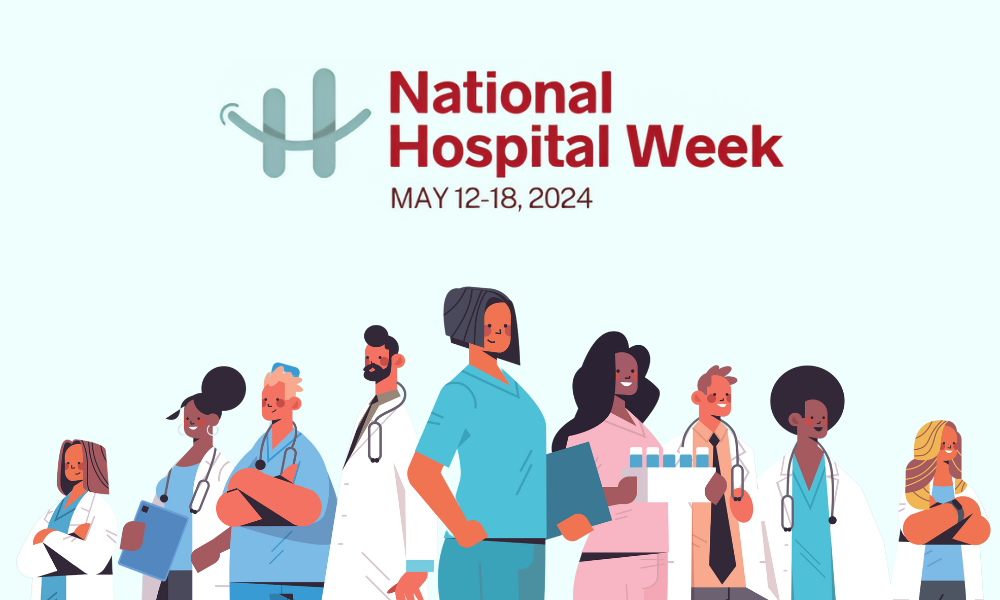Locums CME is a bi-weekly roundup of recent news that matters to locum tenens providers. Stay in the loop on what’s new in the locums industry, and make the most of the locum tenens lifestyle with our fresh finds.
AI as a Medical Sidekick: Exploring the Promise and Practicality in Healthcare
(From New York Times, 6/26/23)
Artificial intelligence (AI) has the potential to someday revolutionize the healthcare industry. Enthusiasts predict this technology will one day be a helpful sidekick. For the time being, AI might be relegated to the tasks of a medical scribe, helping physicians tackle mundane daily tasks like documentation and notes required for administrative purposes.
The New York Times recently wrote about the potential of generative AI in healthcare, particularly in alleviating the crushing burden of medical documentation. The Times interviewed Dr. Matthew Hitchcock, a family physician, who said he used Abridge AI software to record and generate summaries of patient visits. Aside from Abridge, other tech firms such as Ambience Healthcare, Augmedix, Nuance, and Suki are developing AI technologies to assist with healthcare organization and documentation.
Physicians and medical researchers recognize the need to reduce the documentation burden to address burnout and this is where generative AI shows some of its greatest promise. For example, Dr. Hitchcock said the software allowed him to complete his daily documentation in about 20 minutes instead of the two or more hours it used to take.
Doctors have been using various kinds of documentation assistance like speech recognition software for years, but the latest AI is now helping them summarize, organize, and tag a conversation between a doctor and a patient.
Still, there are concerns about AI’s reliability, patient safety, and regulatory uncertainty. The latest advancements in generative AI can produce everything from poetry to accurate computer-coded programs that appear to have been created completely by humans. But these are not always 100% accurate, and while it might be amusing when AI creates some rambling nonsensical fabrication in certain scenarios, we know that doctors deal with much higher stakes of life or death.
While medical centers have started implementing AI, it will take time before physicians feel comfortable relying on it for diagnosis. Even then, a diagnosis from AI would require a physician’s review. And while it may relieve burnout, AI still doesn’t address staffing shortages, which are some of the greatest issues facing healthcare systems today.
For now, physicians like Dr. Hitchcock say they are grateful to have a solution that improves their quality of life by lowering the documentation burden required by the US healthcare system.
Your Locums Prescription
(From Barton Associates, 6/21/23)
Permanent positions at urban hospitals or clinics are highly competitive to secure. More providers apply for these jobs because there are more patients to treat, which leads to greater job stability, and better resources because they bring in more revenue.
Providers looking for a job can explore locum tenens opportunities at rural health facilities, which will help them add to their CV by gaining valuable medical experience and serve communities in need.
Locum tenens providers can work in critical access hospitals designed to serve rural communities and Indian Health Services (IHS) facilities that aim to improve healthcare access for Native American tribes.
Locum tenens providers agree to go where they are most needed to ensure every patient gets the care they deserve. Underserved rural communities often have a greater demand for particular specialties such as Ob/Gyn, cardiologists, or gastroenterologists. As a result, specialists have more job opportunities in these communities and more leverage to request higher pay because of the lack of supply vs. demand.
Critical access hospitals and IHS facilities are common settings where providers are always needed and play a vital role in these settings by providing much-needed medical care. If you’re a provider looking to gain valuable work and life experience while supporting communities in need, look no further than locum tenens.
(From Global Medical Staffing, 6/19/23)
Physicians interested in traveling and living abroad have various options to continue working as a doctor overseas. Here are eight ways Global Medical Staffing to become a doctor internationally:
1. Take international locum tenens assignments: Travel-related costs like housing and malpractice insurance will be covered for locum providers on international assignments. Working as a doctor internationally allows them to explore new places with an adventurous working experience.
2. Practice telemedicine or telehealth: Physicians can provide medical services remotely through video consultations. Many physicians living abroad can only treat patients within their country because of licensing laws.
3. Work as a physician consultant for an international company: Use specialized medical expertise to consult with global companies, such as pharmaceutical or tech startups, which may not require an active medical license.
4. Practice medicine abroad on US military bases: Serve your country as a civilian on military bases worldwide. Military bases open up more places where American doctors can practice abroad, such as Guam, the U.S. Virgin Islands, Japan, or Germany.
5. Working for international non-governmental organizations (NGOs): These opportunities open up a part of the globe where doctors can help treat underserved populations.
6. Finding opportunities through personal networks: Seek out long-term or short-term assignments by accessing professional networks overseas. Using your network comes without the support of an agency, of course, but it is a viable option for those who want to go it alone.
7. Joining a medical corps: The U.S. Public Health Service Commissioned Corps or International Medical Corps is an excellent way to put medical skills to use, taking care of people with no other access to care.
8. Participate in a medical mission: Physicians can use their skills as a volunteer to provide healthcare in underserved areas.
(From Vista Staffing Solutions, 6/14/23)
Locum tenens assignments are attractive opportunities for full-time providers looking to transition into a role that offers greater flexibility, work-life balance, and better pay. But if you’ve been in a full-time role for a while, you may not be sure how to pursue locum tenens.
Staffing companies can help full-time providers transition into a locum tenens role, but no two staffing companies are the same and providers must have all of their questions answered before agreeing to any locums contract.
Vista Staffing Solutions posed some key questions for providers to ask recruiters before agreeing to a contract with a staffing company.
- What types of assignments do you have available? Find out whether their assignments align with your specific interests and career goals. Understanding the specialties and locations they staff and the shift and call requirements will help you determine if the company is a good fit.
- Where are your assignments located? Use this question to inquire about the company’s placement options. Ultimately, you’re the only person who knows where you would and wouldn’t like to work. Staffing companies need to be upfront about the areas where you’ll be sent on assignment. You don’t want your only locum tenens option to be in a location where you won’t be happy.
- How long does it typically take to fill an opening? Some facilities can complete credentialing within a few weeks, while others may take up to six months. Staffing companies can’t speed up approvals or shorten the application, but they should be able to give you a realistic timeline of how long it could take for placement on a locum tenens assignment, which will help you plan the future.
- What kind of support do you provide? Physicians should need a personal contact in they have any questions about their application, housing, or credentialing. A good staffing company gives you access to a personal contact or recruiter who offers comprehensive support and can provide timely responses that help make a provider’s experience stress-free.
- What is your placement strategy? Knowing a company’s placement strategy tells you the types of assignments that are prioritized, how that company goes about finding and placing candidates and provides insight into whether or not they are willing to work with you to find the best fit.
Check out Locumpedia’s “No-BS” locum tenens resource guide here to find info on locum contracts.
(From Integrity Locums, 6/23/23)
Locum tenens offers physicians the opportunity to achieve greater work-life balance by breaking free from the monotony of routine medical work and embracing a dynamic workplace environment filled with new possibilities temporarily. However, it can be challenging to navigate the transition.
Here are five valuable tips to help transition from permanent work to a temporary locums gig:
1. Start slow: Consider taking locum assignments during days off or a vacation while maintaining your permanent position. A gradual transition allows professionals to experience the unique opportunities of locum tenens work.
2. Embrace flexibility: One of the biggest advantages of working locum tenens is the ability to control when and where you work, but that requires you to be open and adaptable to accommodate each new facility’s needs. Each new facility will have its systems, protocols, and team dynamics, and you will have to be able to adapt to those new systems quickly so you can keep the facility’s operations moving and maintain a high level of care.
3. Keep Your CV Updated: A CV should reflect each provider’s skills, experiences, certifications, and licenses. A well-maintained CV is a professional calling card and helps consultants and employers assess a clinician’s suitability for specific assignments. An updated CV includes recent experience, certifications, and licensure and details the specific skills each provider has. An updated CV helps employers quickly gauge your suitability for specific assignments.
4. Identify priorities: Locums need to know their priorities, professional aspirations, and values. This self-awareness helps them find the proper healthcare settings, clinical scenarios, and patient demographics that resonate with their strengths and passions.
5. Pick an ideal location: When choosing an assignment, it’s important to consider both the geographical location and the community where you will be practicing. Do you want to work in urban cities, quiet suburbs, or rural communities? Providers can broaden their opportunities and work in diverse healthcare environments by obtaining multiple state licenses or Interstate Medical Licensure Compact (IMLC) credentials.
(From MPLT Healthcare, 7/3/23)
The demand for locum tenens providers is increasing. In its latest market report, Staffing Industry Analysts (SIA) estimates that the locum tenens industry will see 10% market growth this year and 8% in 2024. This uptick in need for locum tenens brings opportunities for physicians to receive higher pay. Here are some of the most notable compensation trends we’re seeing for locum tenens physicians:
- A shift in career: Physicians are making career shifts, such as opting for reduced hours or telehealth work, creating a greater need for locum tenens providers. This increased demand gives locum tenens providers more leverage to negotiate higher pay rates. Physician shortages also contribute to higher compensation and more lucrative opportunities.
- Certain specialties see pay raise: Specialties such as Ob/Gyn, anesthesiology, cardiology, neurology, gastroenterology, orthopedic surgery, urology, and internal medicine have seen a rise in compensation. Locum tenens providers with experience in these areas have greater bargaining power to demand higher pay rates.
- Inflation is a significant issue affecting healthcare:
Salary growth and productivity within healthcare organizations have been impacted by inflation. While physician compensation has increased overall, a report from the Medical Group Management Association (MGMA) said salaries are not keeping up with current economic conditions.
Many healthcare facilities are adjusting their staffing models by hiring locum tenens physicians to supplement the work of full-time providers. Locum tenens providers are contractors, so by hiring locum tenens, facilities can offer physicians higher pay rates and save money because there aren’t the same upfront costs that come with hiring a permanent provider, such as health benefits, signing bonuses, malpractice insurance, or other hiring expenses.
When pursuing locum tenens assignments, providers should understand the current compensation landscape and the potential factors that could lead to greater pay so they can take advantage of this when negotiating a contract.
Physician Wellness Retreat
(From Insider, 7/3/23)
Burnout often arises from a lack of job satisfaction and rewards, leading to physical and emotional exhaustion, and negatively affecting relationships and overall well-being. The consequences of burnout go beyond exhaustion, though, often leading to depression, anxiety, and physical ailments. The pandemic further intensified burnout in the healthcare industry, as many providers felt overwhelmed by excessive workloads.
One physician offered the following tips to help healthcare professionals recover from burnout without opting to leave medicine.
- Refocus: Make a list of the positive aspects of your job, even if they seem trivial, and remind yourself of them when you’re feeling negative.
- Be mindful: Pay attention to the small pleasant moments at work and savor them, such as kind gestures from coworkers or positive patient interactions.
- Be grateful: Start a gratitude journal to appreciate what your work enables you to have, both big and small.
- Be healthy: Developing healthy habits includes maintaining your physical, mental, and spiritual health—eating well, staying active, getting enough sleep, exercising the brain, and nurturing spiritual connections.
- Be well: Wellness is not only physical wellness. Exercise your brain by reading, learning new things, or keeping up to date in your field.
- Be flexible: Adapting to change is crucial. One of the common causes of burnout is the sense that we have no control at work. We must recognize that even if we can’t control our situations, we can control our reactions.
- Create boundaries: Give your best effort at work, and then walk away. We must create boundaries to leave our best at work and still do our best at home.
- Maintain connections with loved ones: Your life is more than just work. Make time for your family and friends. Consider joining local groups with similar interests, which is an excellent way to develop a sense of belonging in your community.
- Seek support when needed: Don’t be afraid to reach out to your supervisor or a trusted coworker when you feel burned out.
(From American Medical Association, 7/3/23)
Twenty-three state medical boards across the US have modified their licensing applications to support physicians seeking care for mental health or substance use disorders.
Organizations such as the Dr. Lorna Breen Heroes’ Foundation, the American Medical Association (AMA), and the Federation of State Medical Boards (FSMB) have advocated for changes to the “intrusive questions” asked on licensure applications. At least 12 other states are revising their application questions to ensure physicians feel comfortable seeking help.
This work is important because research shows that physicians working in states with licensing applications probing broadly about mental health history were 20% more likely to be hesitant about seeking help.
The AMA actively promotes the mental health of medical students, residents, and physicians and has urged removing stigmatizing language related to mental health or substance use disorders from state licensing, credentialing, and employment applications.
The Dr. Lorna Breen Heroes’ Foundation and AMA have collaborated to identify states needing changes. The Heroes’ Foundation was established after Dr. Breen, an emergency medicine physician in New York, died by suicide during the COVID-19 pandemic. The organization’s goal is to create a world where seeking mental health services is universally viewed as a sign of strength for healthcare professionals.
(From Physician’s Weekly, 7/1/23)
A common metaphor is used for physicians comparing them to an Energizer Bunny-type battery, suggesting that their physical limit is like a “body battery” that immediately stops once all energy runs out. Although, this metaphor does not accurately reflect the reality for physicians. Physicians learn to keep pushing beyond their limits, unlike a battery that needs recharging.
A more accurate representation of a physician’s approach to energy is the metaphor of an “energy account,” similar to a bank account that holds their energy. It has a line indicating full and empty. Physicians are trained to tolerate working with energy levels below zero and feel compelled to continue providing patient care despite exhaustion.
Physician’s Weekly points out the negative impact of the “never show weakness” directive in medical education, which contributes to the risk of burnout and even suicide among physicians — reports say physicians are 1.4 to 2.3 times more likely to commit suicide than the general population.
During medical school, physicians show up and perform even with depleted energy. A persistent fear of being perceived as weak or incapable drives them to ignore their energy levels and resist self-care.
The conditioning to hide signs of struggling further reinforces the notion that any expression of weakness can be detrimental to a physician’s career. Still, we must remove the destigmatization and discuss the benefits of work-life balance. By reprogramming the mindset that needing a break shows weakness, doctors can overhaul the negative stigma and create an industry that promotes physical, mental, and emotional well-being.
Socially Speaking
From LinkedIn
From Facebook
From Twitter
Doctor’s Notes
(From Yahoo! Finance, 6/29/23)
Doximity’s 2023 State of Telemedicine Report highlights the positive impact of telemedicine on patient access and physician time management. The report reveals that 88% of U.S. physicians surveyed believe telemedicine has increased patient access to healthcare, especially for populations that previously faced barriers to care. Physicians also indicated improved schedule management, productivity, autonomy, and work-life balance due to telemedicine.
Telemedicine also brings various patient access benefits, such as reduced patient no-show rates and equivalent or better adherence to treatment plans. Patients who had experienced telemedicine in the past year reported greater access to healthcare services and higher satisfaction with their care.
The report showed reduced patient no-show rates and 77% of physicians observed equivalent or improved patient adherence to treatment plans. Over 80% found telemedicine helpful in enhancing continuity of care for patients with complex or chronic conditions. Physicians also used telemedicine to discuss lab and test results, treatment options, medication management, remote patient monitoring, patient triage, and urgent care.
Patient adoption of telemedicine was also positive, with 85% of patients who had a telemedicine visit in the past year reporting superior or equivalent overall care. Most patients say they would be more likely to consult with a doctor in a non-emergency situation if it could be a virtual visit.
The report’s findings suggest telemedicine should have a permanent role in healthcare delivery, with the potential for continued growth by offering benefits in productivity and equitable access to care.
(From Medical Economics, 6/28/23)
A study conducted at UW Health, affiliated with the University of Wisconsin, investigated if working fewer hours would result in less time spent on electronic health records (EHRs) for primary care physicians (PCPs).
The study showed a mixed outcome. While total EHR time consistently decreased, there was no significant reduction in time spent taking notes or working outside of regular office hours. The report revealed that part-time physicians spent more time in the EHR per hour of the clinic than their full-time counterparts.
Physicians with fewer clinic hours often devote significant time to inbox work beyond their scheduled clinic hours. They may also dedicate additional time outside regular hours to catch up on EHR tasks.
The study’s authors observed that physicians working fewer hours may have lower burnout rates, suggesting that more time spent on EHRs may not directly translate to more burnout. Considering the growing EHR workload and the shortage of PCPs in the US, it is vital to prioritize efforts that achieve the right-size workload for all physicians, allowing sufficient time for EHR-related tasks.
(From KevinMD, 6/30/23)
Healthcare providers often assume that reducing the time spent on direct patient interactions decreases the time devoted to electronic health records (EHR) management. However, this notion may only hold true in some scenarios. There’s growing evidence suggesting it is possible to balance efficient EHR utilization and maintain meaningful patient engagement, a topic extensively discussed at this year’s Healthcare Information and Management Systems Society (HIMSS) 2023 conference.
ChatGPT
KevinMD discusses several advancements in healthcare technology presented at the HIMSS conference. The integration of ChatGPT, a language model developed by OpenAI, with EHRs, aims to prioritize and distribute in-basket messages more efficiently, potentially automating clinical documentation and prescribing. Careful monitoring and review of automated responses by a licensed physician would be necessary to ensure patient privacy and accuracy.
Mixed Reality Technologies
Medical extended reality (MXR) is another emerging field explored at the conference. MXR involves using virtual, augmented, and mixed-reality technologies in healthcare. For example, MXR can simulate medical scenarios for training and educate patients about their conditions and treatments. These new technologies have potential applications in medical training, patient education, pain management, and patient rehabilitation.
“Cobots”
Collaborative robots, or “cobots,” are new robots used in healthcare settings designed to assist medical staff. These robots perform tasks like moving heavy items or automating pharmacy tasks like medication dispensing. Cobots are seen as tools to augment human capabilities and improve working conditions rather than replace human workers.
Fast Healthcare Interoperability Resources (FHIR)
Fast Healthcare Interoperability Resources (FHIR) aim to facilitate healthcare information exchange between different electronic health record systems. FHIR helps existing EHR software comply with the EHR interoperability requirements, which the 21st Century Cures Act created. Further Improvements are needed before full integration into EHR systems.
The conference also highlighted a partnership between Oracle Health and Athena Health to explore the use of biometrics, specifically face recognition software, to verify the identity of providers for more efficient prescribing of controlled substances. The HIMSS conference showed many potential benefits of using this technology, but much of it is still in its early stages of development and requires further research and improvement.








